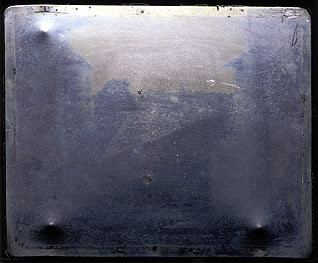Photography has had major advances over the last two hundred years. What started off as basically a simple box that took faded blurry photos has turned into major technical advances such as the DSLR’S we use today. Understanding when photography was invented and how it has progressed is a very interesting part of the study, love and appreciation of photography.
When Was The First Camera Invented?
The German astronomer Johannes Kepler used the term “camera obscura” for the first time in history in the year 1604.
The first camera obscura consisted of a pinhole in a tent set-up that projected images outside of the tent into the darkened areas inside the tent. The German astronomer Johannes Kepler used the term “camera obscura” for the first time in history in the year 1604. But it’s origins can be traced all the way back to a Chinese philosopher named Mozi in the 5th century BC. Since then many have used variations and even Leonardo da Vinci talks about camera obscura in his “Codex Atlanticus”.
During the 17th century, basic lenses were introduced to help focus the images and the camera obscura became small enough to be portable.
When Was The First Photograph Taken?
 In 1827, a gentleman by the name of Joseph Nicéphore Niépce created the first picture ever taken that did not quickly fade like others before, known as The Niépce Heliograph (pictured to the right). His success led to rapid progressions in photography.
In 1827, a gentleman by the name of Joseph Nicéphore Niépce created the first picture ever taken that did not quickly fade like others before, known as The Niépce Heliograph (pictured to the right). His success led to rapid progressions in photography.
In the mid to late 1800’s, wet plates, daguerreotypes, and emulsion plates were introduced. Photographers experimented with different techniques and chemicals with each type of emulsion. Those three emulsions were instrumental in the progression and development of modern photography as we know it today.
Daguerreotypes
Louis Daguerre collaborated with Niépce after his experiment to create the daguerreotype, a type of modern film. They took a copper plate coated with silver and exposed it to an iodine vapor before exposing it to light. The early daguerreotypes had to be exposed to light for up to fifteen minutes in order to create an image on the plate.
In the late 1850’s, the daguerreotype was replaced with the emulsion plate.
Emulsion Plates
Emulsion plates, also known as wet plates, were better suited for portrait photography, which was pretty popular during this time. For starters, they were more affordable than daguerreotypes and they only required two to three seconds of exposure time. Rather than a single coating on the plate, the Collodion process was used. It was also during this time that bellows were added to cameras to help get better focus.
Ambrotypes were a type of wet plates that used glass plates rather than copper.
Tintypes were a type of wet plate that used tin plates. They had to be developed fairly quickly so photographers had to be prepared. However, they were much more sensitive to light.
A lot of the images taken during the Civil War were taken on wet plates.
Dry Plates
Richard Maddox invented dry gelatin plates in the late 1870’s. Rather than being made as needed, dry plates could be stored. They were smaller and could be handheld. The mechanical shutter was eventually created as explore times got faster with each advancement.
Kodak
In the 1880’s, George Eastman started a company called Kodak. He created small box camera with no focusing adjustments and a single lens. It consisted of a roll of film that he could take back and develop 100 exposures from in a dark room. This meant the general public could purchase them, take their images, then return to the store to be developed. These were much more affordable, meaning cameras weren’t just for professional photographers any more.
Instant Cameras
The Model 95 was the first instant camera. The camera was capable of doing it’s on “in-camera” developing. By the mid 1960’s Polaroid had many different models of instant cameras on the market. In 2016, Polaroid stopped production of instant cameras.
SLR And Point and Shoots
From the 1950’s on, many SLR type cameras and point and shoots were created. With each advancement came greater camera control when it came to settings and interchangeable lenses. Still today, cameras are becoming more and more advanced with many brands and models to choose from for both professional photographers and the general public.
Related Photography Information
Photography History Videos
